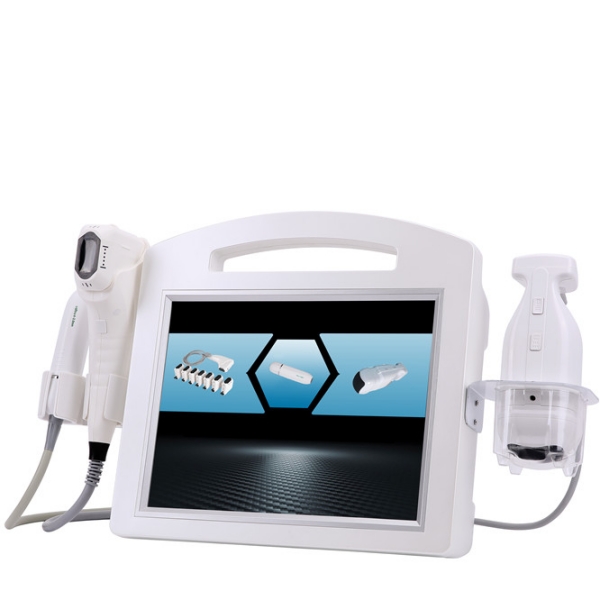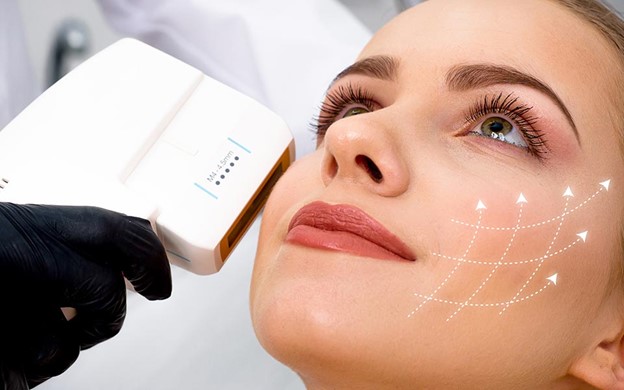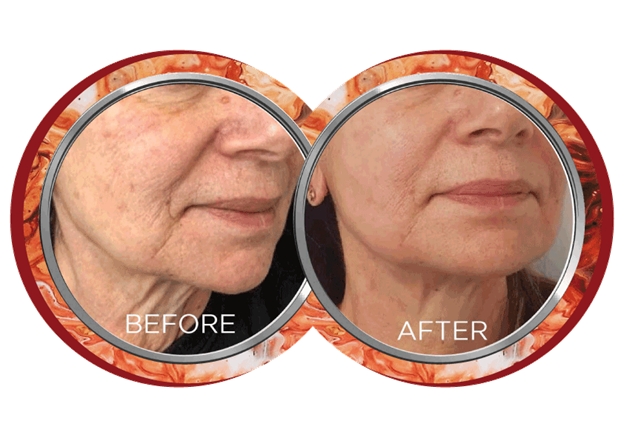
What You Need to Know About HIFU Facial – User Guide
The HIFU facial, or High-Intensity Focused Ultrasound facial, is a non-invasive treatment that uses ultrasound technology to promote skin tightening and rejuvenation. This treatment is gaining popularity for its ability to enhance collagen production, which can improve skin elasticity and reduce the appearance of wrinkles and fine lines. Unlike other cosmetic procedures, HIFU doesn’t require surgery, incisions, or lengthy recovery times, making it a convenient option for those looking to improve their skin’s appearance without the risks of invasive surgery.
Table of Contents
ToggleWhat You Need to Know About HIFU Facial: Overview
A HIFU facial is a popular non-invasive cosmetic treatment that uses ultrasound energy to lift and tighten the skin. This section explains the basics and benefits of HIFU facial.
What is HIFU?
HIFU, or High-Intensity Focused Ultrasound, utilizes ultrasound waves to target deep layers of skin. This section discusses how HIFU promotes collagen production and offers a comparison with other non-surgical treatments.
Explanation of HIFU (High-Intensity Focused Ultrasound)
- HIFU uses ultrasound waves to focus energy deep into the skin.
- This energy stimulates collagen production, which helps tighten and firm the skin naturally over time.
- It does not damage the surface layers of the skin, making it minimally invasive.
How HIFU Works for Facial Rejuvenation
- The ultrasound waves penetrate different layers of skin, triggering collagen production.
- Collagen tightens and rejuvenates the skin, improving its appearance gradually.
- Ideal for reducing sagging, fine lines, and overall skin texture.
Comparison to Other Non-Surgical Facial Treatments
- HIFU vs. RF (Radiofrequency): RF uses heat to stimulate collagen but doesn’t reach the deeper layers as HIFU does.
- HIFU vs. Laser: Laser targets superficial layers, while HIFU is more effective for deeper lifting.
- Results Duration: HIFU generally provides longer-lasting results compared to other non-surgical options.
How Does the HIFU Facial Treatment Work?

HIFU treatment is straightforward, targeting deep skin layers to stimulate collagen production. This section covers the treatment process, target areas, and sensations typically felt during treatment.
Overview of the Treatment Process
- Ultrasound gel is applied to the target area.
- The HIFU device emits focused ultrasound energy to specific skin layers.
- The entire session typically lasts 30–60 minutes, depending on the area treated.
Key Areas Targeted by HIFU
- Common treatment areas include:
- Jawline and neck for a lifted appearance.
- Cheeks and brow area to reduce sagging.
- Around the eyes to reduce puffiness and fine lines.
Expected Sensations During Treatment
- Patients may feel warmth, tingling, or mild prickling in the targeted areas.
- Discomfort is usually minimal, and the skin remains unaffected on the surface.
- Some experience slight redness post-treatment, which fades quickly.
Benefits of HIFU Facial
The HIFU facial provides numerous skin benefits, from tightening and lifting effects to long-term collagen production. This section covers the primary advantages that make HIFU a popular non-invasive option.
Skin Tightening and Lifting Effects
- HIFU offers significant lifting results, especially in sagging areas.
- Effective for lifting cheeks, brow lines, and jawline.
- The natural tightening effect continues to improve over several months.
Improved Skin Texture and Tone
- The collagen boost smoothens and refines skin texture.
- Visible reduction in fine lines and wrinkles.
- Contributes to a brighter and more even skin tone.

Long-Term Effects and Collagen Production Benefits
- Results last up to 12 months, with benefits gradually improving as collagen builds.
- The treatment stimulates collagen production for several months.
- Annual maintenance sessions can further extend results.
Who is an Ideal Candidate for HIFU Facial?
HIFU facials are ideal for individuals seeking a non-invasive approach to anti-aging. This section identifies the age range, skin types, and conditions suitable for HIFU, as well as those who should avoid it.
Suitable Age Range and Skin Types
- Typically suitable for individuals in their 30s and beyond.
- Works best on individuals with mild to moderate skin laxity.
- Compatible with most skin types, though results may vary.
Conditions That HIFU Can Improve
- Effective for:
- Reducing fine lines and wrinkles.
- Defining and lifting the jawline.
- Improving sagging areas around the face and neck.
Who Should Avoid the Treatment
- Those with severe skin laxity might not benefit as much.
- Not recommended for those with open wounds, skin infections, or severe acne.
- Pregnant individuals should consult a doctor before undergoing HIFU.
What to Expect During a HIFU Session?
HIFU sessions are relatively quick and have minimal discomfort, making them convenient for most individuals. This section provides an overview of the session, pain levels, and post-treatment care recommendations.
Duration and Stages of the Treatment Session

- Initial skin assessment followed by ultrasound gel application.
- The device is moved over the skin in a pattern for even energy distribution.
- Total session time ranges from 30–60 minutes based on the treatment area.
Pain and Discomfort Levels
- Generally well-tolerated, though some describe it as a mild tingling or prickling sensation.
- Topical anesthetic can be applied for added comfort if needed.
- Minimal discomfort post-treatment, with side effects usually subsiding quickly.
Post-Treatment Care Guidelines
- Avoid direct sun exposure and use gentle skincare products.
- Makeup and regular skincare can usually resume the next day.
- Temporary redness or swelling may occur but resolves within 1–2 days.
Potential Side Effects and Risks of HIFU Facial
While HIFU facials are generally safe, some mild side effects and rare complications can occur. This section covers common temporary side effects, rare complications, and safety guidelines.
Common Temporary Side Effects
- Mild redness and swelling are common and generally fade within a few hours.
- Temporary tingling or sensitivity can occur.
- Skin dryness may occur but usually resolves with regular moisturization.
Possible Rare Complications
- In rare cases, numbness or slight burns may occur if not performed correctly.
- Scarring is rare but can occur, particularly with untrained providers.
- Proper consultation and choosing a licensed provider reduce these risks.
Safety and Regulatory Considerations
- HIFU is FDA-approved for skin lifting and considered safe when administered by professionals.
- Always seek treatment from licensed, experienced providers.
- Proper aftercare enhances results and reduces the likelihood of side effects.
How Long Do Results Last?
The longevity of HIFU results depends on individual factors and lifestyle. This section discusses how long results typically last, factors that impact results, and maintenance recommendations.
Expected Duration of HIFU Results
- Initial results may appear within a few weeks and continue to improve.
- Effects last 9–12 months on average.
- Gradual improvement occurs as collagen production continues.
Factors Affecting the Longevity of Results
- Lifestyle factors like sun exposure, smoking, and skincare impact results.
- Individual collagen production rates vary, affecting results.
- Maintaining a healthy lifestyle can prolong the effects.
Recommended Maintenance Treatments
- Annual or bi-annual treatments are recommended to maintain optimal results.
- Maintenance sessions help boost ongoing collagen production.
- Consistent treatment can improve skin health over time.
Comparing HIFU to Other Skin Tightening Treatments
This section compares HIFU to other popular non-surgical treatments such as RF and laser therapies, discussing cost-effectiveness, duration, and effectiveness.
HIFU vs. RF (Radio Frequency)
- RF uses heat but doesn’t penetrate as deeply as HIFU.
- RF is more surface-oriented, while HIFU targets deeper layers.
- HIFU is better suited for lifting, while RF may be ideal for textural improvements.
HIFU vs. Laser Treatments
- Laser focuses on superficial layers, often improving skin texture and tone.
- HIFU’s deeper penetration provides more substantial lifting and tightening.
- Results from HIFU generally last longer than from laser treatments.
Cost Comparison and Effectiveness Analysis
- HIFU may have higher upfront costs but offers longer-lasting results.
- Cost varies by location, provider, and treatment area size.
- HIFU is cost-effective for patients seeking lasting skin tightening without surgery.
HIFU Facial Cost and Accessibility
HIFU facial costs vary depending on factors like location, provider experience, and treatment area. This section details average costs, factors affecting pricing, and options for financing.
Average Treatment Costs by Region
- Costs range from $800–$2,500, depending on the region and treatment area.
- Urban areas tend to have higher prices than suburban regions.
- Provider expertise and facility quality also influence pricing.
Factors Affecting the Cost
- Treatment area size and number of sessions required.
- The experience and expertise of the provider.
- Clinic location and reputation impact overall cost.
Insurance Coverage and Financing Options
- Cosmetic procedures like HIFU are rarely covered by insurance.
- Many clinics offer financing or payment plans to make treatments more affordable.
- Some patients may consider HSA or FSA accounts for treatment expenses.
FAQs About HIFU Facial
This section addresses common questions, such as treatment pain, downtime, and aftercare recommendations, to help readers better understand the HIFU facial.
Answers to Commonly Asked Questions
- Pain: Most patients report mild discomfort, often described as tingling.
- Downtime: Minimal, as most can resume normal activities immediately.
- Aftercare: Gentle skincare and sun protection are recommended post-treatment.
Conclusion
In conclusion, a HIFU facial offers an effective, non-invasive solution for skin tightening and rejuvenation, using ultrasound energy to stimulate collagen production. With minimal downtime and lasting results, it’s a popular choice for individuals seeking natural-looking improvements without surgery. Though some mild side effects may occur, HIFU is generally safe when performed by a qualified professional. By understanding what to expect and following proper aftercare, patients can enjoy smoother, firmer skin with continued benefits over time.
